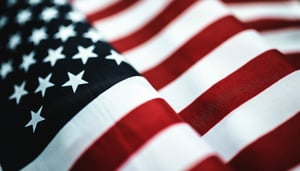Fun Facts About America's Technology Leaders
Posted by
Ashley Little
on
July 6, 2017
 This time of year is all about celebrating America’s roots of independence and liberty. The United States was founded on self-reliance and human ingenuity. Each July 4th, we pay homage to those who helped establish our great country.
This time of year is all about celebrating America’s roots of independence and liberty. The United States was founded on self-reliance and human ingenuity. Each July 4th, we pay homage to those who helped establish our great country.
We want to honor a few of America’s innovators that spearheaded our modern United States.
Sit back with a nice cold lemonade, or a burger from the grill, with a few fun facts about America’s technology pioneers.
- Samuel Morse (1791-1872) developed the first means of long-distance communication—the telegraph. Electric signals were transmitted over a wire. The first telegraph message was sent from Washington D.C. to Baltimore, MD in a single day—and just a few years later, Morse connected communication from the U.S. to Europe.
Did you know? Morse lived as an artist by trade; it was later in his life that he directed attention to telecommunications.
- Thomas Edison (1847-1931) is credited with revolutionary accomplishments in the utility industry that transformed the technology footprint of the United States. In 1882, Edison opened his first power station in Manhattan, NY called Pearl Street Station, which served 82 customers.
- Lewis Latimer (1848-1928) is identified as Edison’s “rival,” and is likely lesser-known in history for this reason. But Latimer did some pretty neat stuff. He developed the first long-life lightbulb, while Edison’s bulb typically lasted a day or two. Latimer encased the light bulb filament within a cardboard envelope, preventing the carbon from breaking. This method provided a substantially longer life to the bulb.
- Nikola Tesla (1856-1943), famous for his discovery of the electric alternating current and AC induction motor, is also responsible for fluorescent light bulbs, the remote control, and the radio. Founded in 2003, Tesla Motors designed a sports car built around an AC induction motor which was patented by Nikola Tesla in 1888.
Tesla was just as interesting of a man as he was intelligent. He had several quirks about himself. He could memorize full books with his photographic memory and only slept an average of two hours a night.
5. John von Neumann (1903-1957), science and mathematics genius, is responsible for von Neumann architecture: modern computer and data storage solutions. Von Neumann discovered that computer programs and data storage could be housed in the same machine. Such a discovery led him to the insight of RAM storage, and executing through a CPU (central processing unit). Prior to von Neumann’s solutions, programs and data were separated.
6. Hedy Lamarr (1914-2000) may be best known for her screen career in the 1920s, but she had quite a few other talents up her sleeve. In the 1940s, she (along with George Antheil) developed the technology to help the navy control torpedoes. They realized that the value in frequency-hopping was that randomized channel-switching made it challenging for enemies to understand what was being communicated, and on which channels.
Interesting fact: The significance from Lamarr’s findings in frequency-hopping is that the earliest form of encryption technology was born.
7. Susan Kare (1954-present) personified the Apple computer in the early 80s, then applied her unique design skills to the Windows 3.0 operating system. Her ingenious ideas range from the Happy Mac icon, which greeted Apple users when they booted up, to the trash can icon for deleting documents. User interface graphics have been forever revolutionized by Kare.
This Independence Day week, we wanted to share these facts as a thank you to some of America’s first developers, leaders, and inventors; such technology has paved a trail for contemporary living in the United States.

Comments